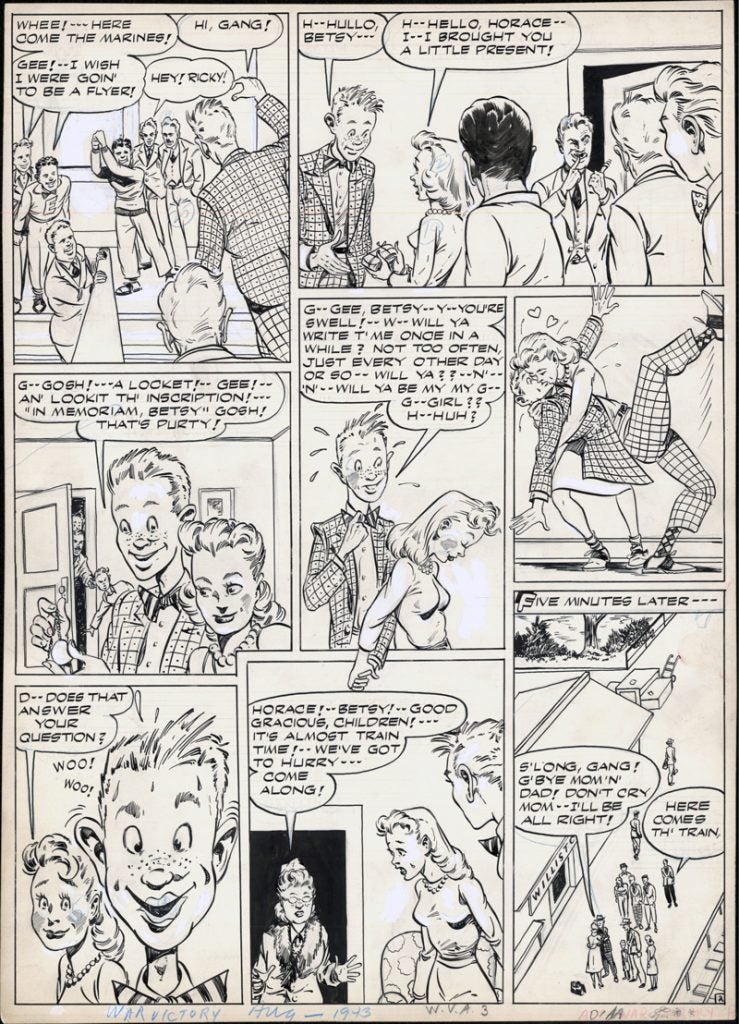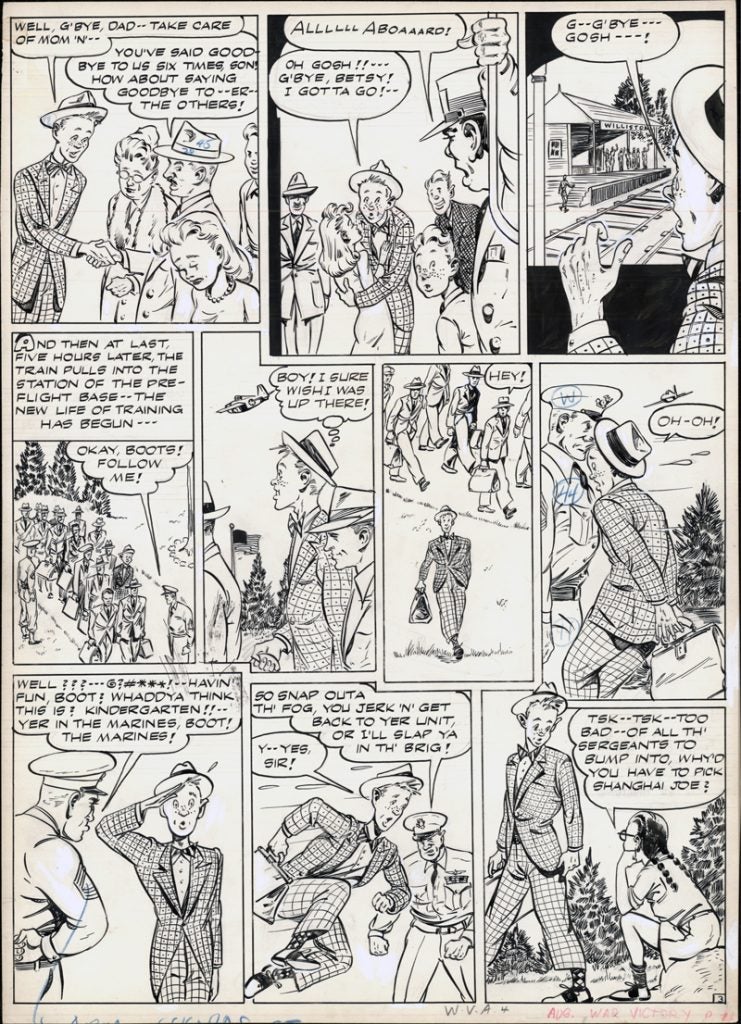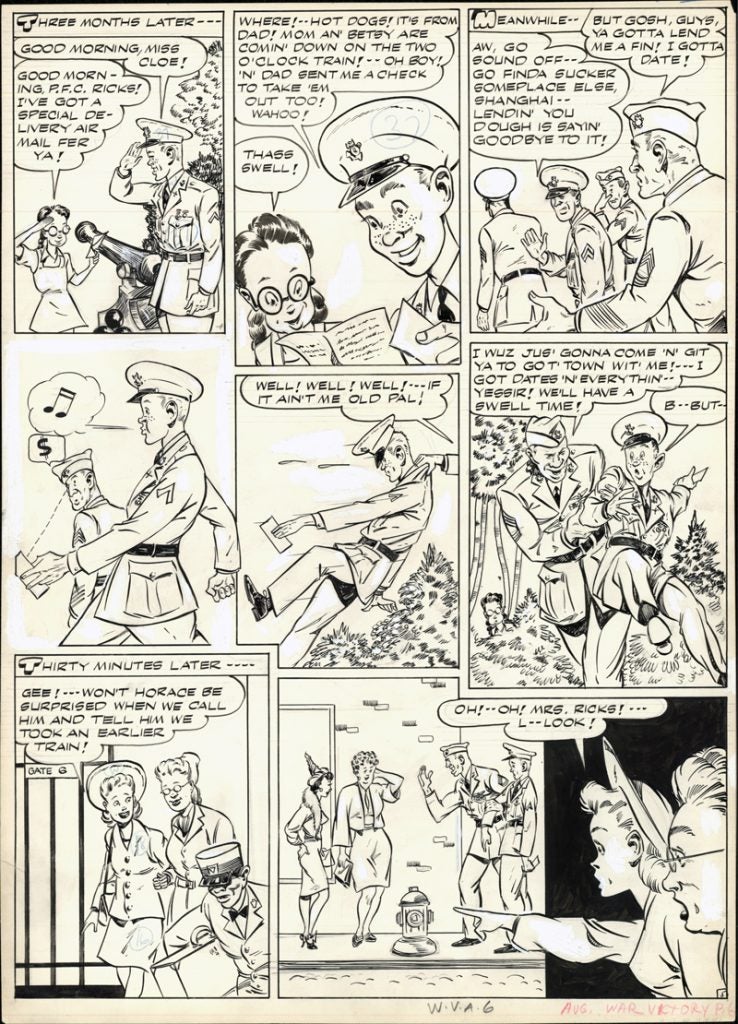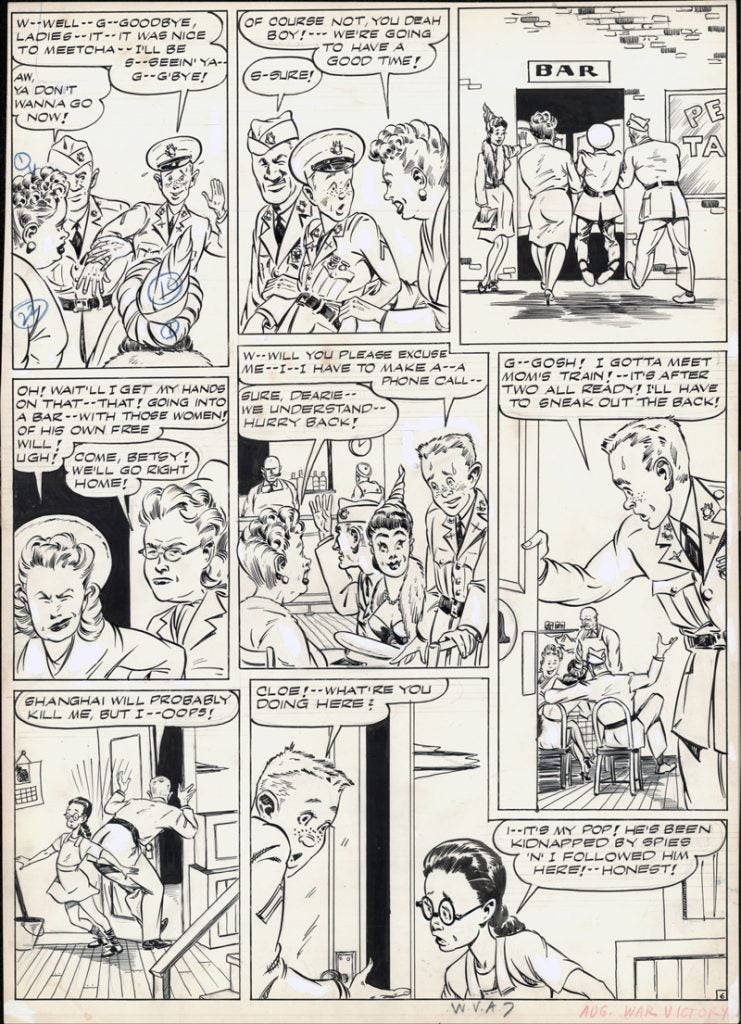Text pieces (in italics) adapted from “The 10-Cent War: Comic Books, Propaganda, and World War II”
Trisha Goodnow and James J Kimble, Eds.
2016 University Press of Mississippi
Chapter 11: War Victory Adventures by James J Kimble
The major comic book houses (National Periodicals, which would become DC, and Timely Periodicals, which would become Marvel) shot to prominence, and formed the foundation of the Golden Age of Comics, by pitting their hordes of superheroes against the Axis powers. One of the most ardent publishers to join this effort, and perhaps the most surprising, was Family Comics (later, Harvey Comics, which is famously known for its kid-friendly funny-book characters and stories). [p 201]
Kimble spends this chapter talking about the series originally titled “War Victory Comics” (issue 1, summer 1942), which became “War Victory Adventures” with its second issue (August 1943). The cover of issue #2 tells you almost everything you need to know about how comics were cooperating with the United States Government to create strong propaganda pieces.
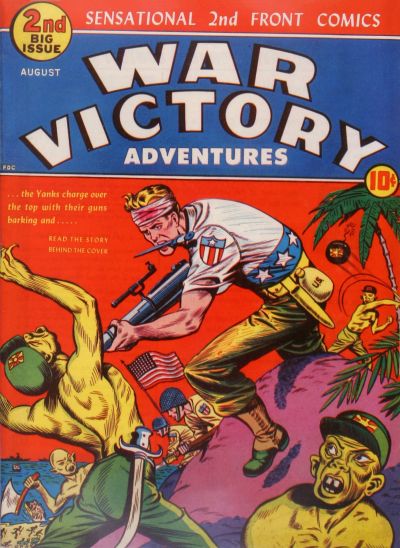
“War Victory Adventures #2” (cover) August 1943
Family Comics
Each individual contribution in some way added to the construction of the larger, nationwide role of a reluctant-but-heroic United States, a metaphoric figure who personified bravery and resourcefulness in the face of undeniable evil. By portraying various Americans in action on the battlefronts and the home front, in other words, the series constituted a compelling and persuasive portrait of the United States itself as a personified participant in the war’s dramatic action. [p 204]
Kimble argues that the selection of common, everyday characters who transform themselves into more heroic ones was a deliberate message to their youthful readership. The first story in this new series introduces Horace “Chickie” Ricks, a shy 17-year-old volunteer who barely needs to shave. Chickie goes to boot camp, toughens up, and rescues his commanding officer from some Nazi spies.
I own all of the original art to this first Chickie Ricks story.
As you can see, below, the series was apparently going to be called Ricky Ricks and then changed to Chickie Ricks. Or, the scripter or letterer thought it was Ricky Ricks and it was corrected as the pages were reviewed. The glued-on “Chickie Ricks” logo has long-ago fallen off the page. I cannot locate a copy of the published page 1 from this story, but the first page from the second story (in Adventures #3) is shown here for reference.
 “War Victory Adventures #3” (Chickie Ricks, p1) January 1944
“War Victory Adventures #3” (Chickie Ricks, p1) January 1944
Family Comics
Or, if you check out the center panel on page 4, the Major’s daughter, Cloe, is the one who combines “Ricky” with her defining the Marine term “chicken” and she is the one who dubs him with the name “Chickie,” accordingly. That panel is a paste-over, so it’s impossible to tell what that dialog was to begin with.
If you look at the other pages in this story, the character is referred to as Horace a few times, on page 2 as “Ricky” (once), on page 4 as “Ricky” (twice) and as “Chickie” once (uncorrected, and in context – see next paragraph), and on page 8 as “Chickie” twice (both clearly corrected).
My take on it is that they were going with “Ricky Ricks” as the name of the character, and somewhere late in the production, the “Chickie” joke gained favor, so they changed the name of the character and then adjusted page 8, and the title page, accordingly, and perhaps even strengthen the script in that one panel with Cloe.
“Presenting Chickie Ricks”
“Presenting Chickie Ricks pp 1-8” (August 1943) by Bob Powell
in War Victory Adventures #2 by Family Comics
by Bob Powell (1916-1967)
15 x 22 in., ink on paper
Coppola Collection

